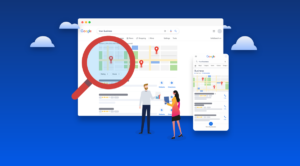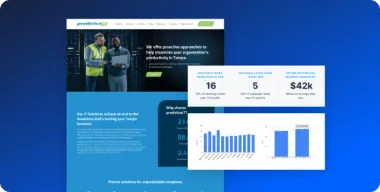I know you’re a busy professional with a million things on your plate. You’ve got a business to run, clients to serve, and a never-ending to-do list. So, when someone mentions “link building” or “SEO,” it might feel like just another task to add to your already jam-packed schedule.
But here’s the thing — link building matters, and it matters a lot more than you might think.
What are Backlinks and How They Impact Rankings
Link building is all about getting other websites to link back to your site. These links, called “backlinks,” are like a thumbs up or a vote of confidence from other websites. And when it comes to search engines like Google, these backlinks carry a lot of weight. The more quality backlinks you have pointing to your site, the more likely you are to show up higher in search results when potential clients are looking for your services.
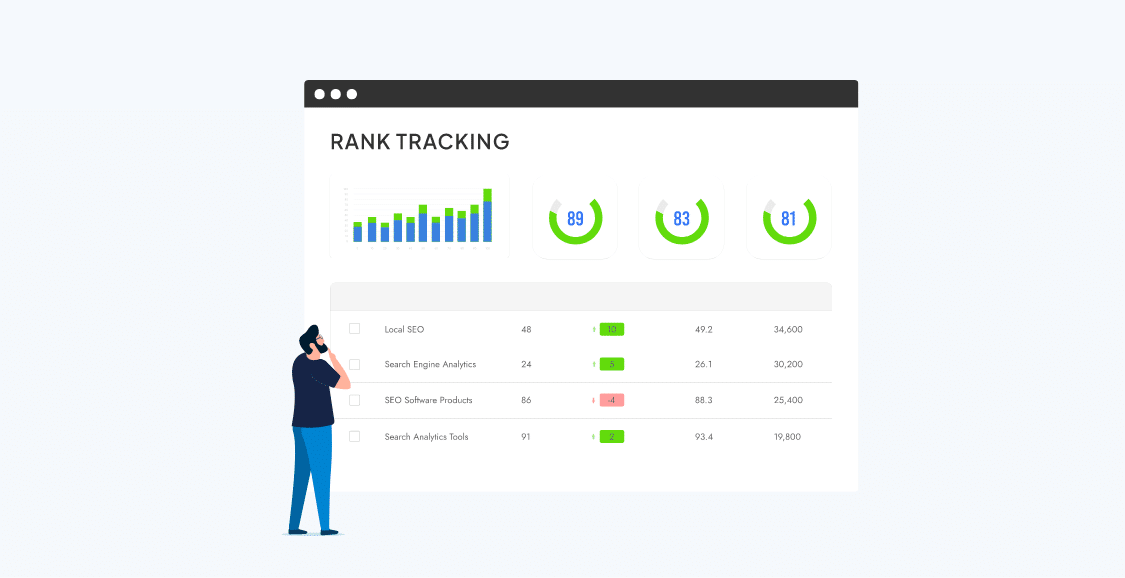
Think about it this way: when someone you trust recommends a restaurant or a service provider, you’re more likely to check them out, right? It’s the same concept with backlinks. When reputable websites link to your content, it signals to search engines that your site is trustworthy, relevant, and worth promoting.
Now, I know what you might be thinking — “That sounds great, but how do I actually build these backlinks?” Don’t worry; we’ve got you covered. In this post, we’ll break down 12 proven tactics to help you start building quality backlinks for your business.
Whether you’re a total beginner or have some SEO experience under your belt, we’ve got tips and tactics that you can start implementing right away.
💡 The #1 result in Google search has an average of 3.8x more backlinks than positions #2-#10 — Backlinko
Quick summary
✅ Backlinks are like votes of confidence from other websites, signaling to search engines that your content is valuable and trustworthy, which can help boost your search rankings and online visibility.
✅ Quality beats quantity when it comes to link building. Focus on earning high-quality, relevant links from authoritative websites in your industry or niche.
✅ There are many effective link building strategies for small businesses, including guest posting, leveraging local partnerships, creating shareable content, and offering to be featured in case studies or testimonials.
✅ Consistently monitor your link building efforts using tools like Google Analytics and Ahrefs, and don’t be afraid to seek help from SEO professionals if needed to develop a customized strategy and accelerate your results.
Why Link Building Matters for SMEs
At the crux of it all, backlinks show search engines (and potential customers) that your content is valuable and trustworthy. But link building isn’t just about boosting your search engine rankings. It can also help you:
- Get more targeted traffic from people who are interested in what you offer
- Establish your brand as an authority in your industry
- Increase your online visibility and reach a wider audience
Many of our clients wonder how they can compete with bigger companies that have way more resources. We always say link building is about “quality, not just quantity.” Even a few high-quality links from relevant websites can make a big difference.
And I want to address another big misconception… You don’t need a massive budget or a team of experts to get started. You just need to focus on creating great content and building relationships with other businesses.
For example, let’s say you’re an accountant. By sharing helpful tax tips on social media, you might catch the eye of a popular finance blogger who links to your site. Or if you’re an eco-friendly cleaning service, partnering with local businesses that share your values could lead to valuable links from their websites.
The point is, link building is a powerful way for small businesses like yours to level the playing field and even help you generate new business leads.
Take this case study for example. We had a long-time client of ours embarked on a link building campaign with our team in 2023. By year’s end, thanks to 163 backlinks built, that client earned 411 unique leads.
Key Factors That Determine Backlink Value and Success
Not all backlinks are created equal. Some can skyrocket your search rankings and send floods of traffic to your site, while others might not move the needle at all. So, how can you tell the difference?
Here are the key factors that determine the value and success of your backlinks:
Domain authority of linking site
Domain authority is a score that predicts how well a website will rank on search engines. In general, the higher the domain authority of the site linking to you, the more “link juice” you’ll get. Think of it like getting a shout-out from a celebrity vs. your next-door neighbor. Both are nice, but the celebrity mention is going to carry more weight.
Relevance of linking site and specific page
Getting a link from a website in your industry or niche is much more valuable than a link from a completely unrelated site. For example, if you’re a dentist, a link from a popular oral health blog is going to be way more relevant than a link from a pet food website. The same goes for the specific page the link is on – a link from a page about “top dental tips” is more relevant than a link from a page about “best dog breeds.”
Total linking domains > total backlinks
One of the most important things to take away from this blog is that quality beats quantity. It’s better to have links from a diverse range of high-quality websites than a bunch of links from the same site. Search engines like Google value the number of unique domains linking to your site more than the total number of backlinks.
Traffic of linking site
Links from websites that get a lot of traffic can send some of that traffic your way. Plus, high-traffic sites are often seen as more authoritative and trustworthy in the eyes of search engines. So, while traffic isn’t a direct ranking factor, it can indirectly boost the value of your backlinks.
Anchor text used in the link
Anchor text is the clickable text in a hyperlink. Using relevant, descriptive anchor text can help search engines understand what your page is about and can even give you a small SEO boost for those specific keywords. For example, a link with the anchor text “best dental implants” is more valuable for that keyword than a link that just says “click here.”
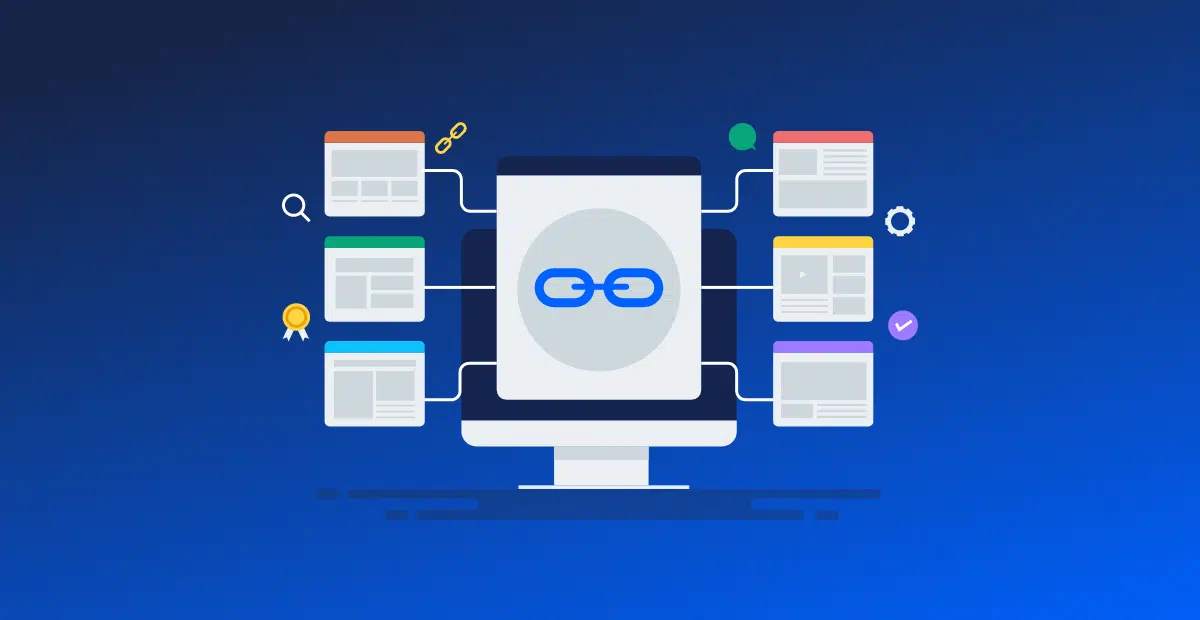
12 Proven Tactics on How to Get Backlinks
Now that you have an understanding of backlinks and how to find success with them, let’s look at 12 proven ways you can grow your backlinks. To help you understand the effort or difficulty of each of these tactics, we have tagged each item with qualifiers.
1. Guest Posting (Intermediate)
Guest posting is the process of writing blog articles that are then published on a website (other than your own) in your industry. When you write the article, you would typically include a link back to your website within the content, referencing something you mentioned in the blog or the author bio.
That website will then link back to your website in the article you wrote as a way of saying thanks for providing the content. Many websites are desperate for fresh, quality content, and you can use that opportunity to help build links to your website.

To start, you need to find websites in your industry that will accept guest authors. I’d recommend starting by reaching out to the blogs that you usually turn to for industry news and ask whether you can contribute to their website.
Beyond that, you can search on Google for something like: “write for us” [Industry]. Many of the websites listed in the results will have published guidelines about what you need to do to submit a guest post for their site.

Then, if you don’t already have an article prepared, start writing one that is informative, helpful, and tailored to the audience of the website you’re writing for. Make sure you include an author bio at the end with a link back to your website.
Don’t just disappear after you’re done. Once your guest post has been published, make sure you help promote it on your social media profiles or in an upcoming email newsletter.
One of the best parts about guest posting is that it not only helps with your search performance but also helps expose your brand to a new audience. Try to maintain your relationship with the website manager so you can come back and post again in the future.
✅ Tip: A great way to find sites in your industry to contribute guest posts on is through a Google search. Use the following searches:
- intitle:”Submit blog post” [industry]
- intitle:”write for us” [industry]
- intitle:”Submit an article” [industry]
- intitle:”Suggest a guest post” [industry]
- intitle:”Send a guest post” [industry]
- intitle:”Write for us” [industry]
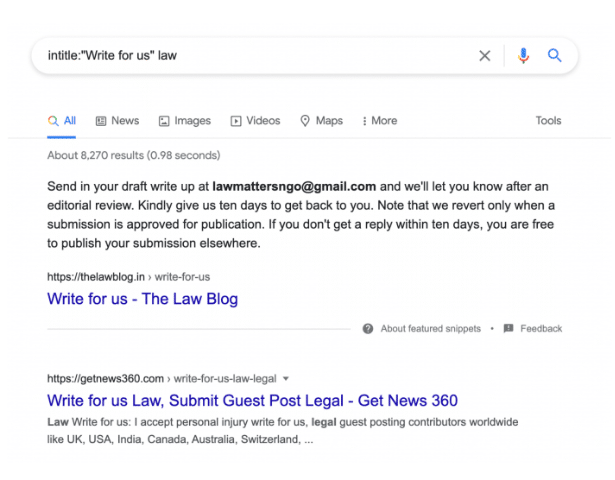
2. News websites (Intermediate)
News websites are a great way to establish authority on a topic, and they can also be a good way to get backlinks. Whether it’s speaking as an expert on a topic, or talking about a local event, here’s three ways to get backlinks from new sources.
Help A Reporter Out
Help A Reporter Out (HARO) is a platform where reporters and media agencies ask questions to experts in various fields for the stories they are working on.
By subscribing to HARO, you get media opportunities delivered to your inbox every day. These can range from requests for interviews or just questions about a specific topic. In many cases, the journalist is looking for an expert to quote in their article.

HARO has queries from reporters in every industry — technology, fitness, finance, marketing, travel, healthcare, you name it. There’s a reporter out there looking for experts in your industry to help them, and HARO gives you a chance to step up and be that expert.
Not every query you respond to will pan out, but the effort you put in with these queries can eventually lead to high-quality links and increased brand awareness through some major publications.
The best part about HARO is that it’s free. You can sign up today and start receiving daily notifications of pending queries from reporters. They also have a paid version that lets you search for specific queries and makes pitching to reporters easier and faster.
The most important part about HARO is that you need to have a process in place to deal with these notifications. When your inbox is full, it’s really easy to ignore HARO notifications and focus on something more urgent, but in many cases, these queries will have short deadlines, and it’s essential for you to respond quickly.
Here’s the process we use at Pronto:
- One team member is responsible for scanning the queries in each email notification.
- If a query seems like a good fit, it is then forwarded to the team member in the best position to respond.
- That team member is then responsible for responding to the query before the deadline.
Often, our co-founders respond to queries since reporters typically want to speak to someone they can quickly assess as an expert and someone with a big job title is more quotable in major publications. However, if the query asks very detailed questions in a smaller niche like SEO or google advertising, we’ll have a team member with more expertise in that area.
So go to Help A Report Out so you can earn trusted links and press from major news publications, magazines, and blogs.
Publicly announce a business milestone
If your company has done something newsworthy, write a press release and send it to a distribution network like PRWeb. An added bonus of this link-building technique is that you have full control over the content in the release, meaning you can choose the keyword you’d like to rank for in your anchor text.
That said, keep in mind a few caveats. One, to gain an SEO boost from a press release, news outlets must pick up your story. Two, using this technique too often (like more than once a month) can make your website look spammy in the eyes of search engines, which could hurt your rankings.
Local news outlets
If your business is based in Los Angeles, you’re probably not going to make it into the LA Times, but if you are in West LA, you stand a good chance of getting a link from the Argonaut. Find the local news source in your community.
Is your company planning a big community service event? Invite a reporter! Did you just release an awesome new website? Let them know how your business is growing. Get that link!
3. Post on social media (Easy)
While social media doesn’t directly affect your rank in Google search results, your activity on various platforms can attract more traffic, followers, and backlinks. In other words, being a social media butterfly can indirectly boost your rankings. The key — like with all effective link-building strategies — is to create quality content people want to read, share, and link to.
Social networking sites are one of the best marketing tools as they are a gathering place for people who could potentially be interested in what you have to offer.
You can use social media sites to find those people. By providing links to your site in some of your posts, it will be easy for people to get to your site. Best of all, when you use popular social media sites that have a good reputation, mentions of your company and links to your site can have an indirect impact on search rankings.

Business-to-consumer
Consumers like to share content, so if you have a business that’s interesting, shareable, and is targeted at consumers, then you’ll generally have an easier time developing a social media campaign that drives social media backlinks back to your site.
The key to this strategy is to develop shareable content. Here’s an article by Neil Patel on the recipe for viral content. The more you’re able to interact with your audience, the better this strategy will be.
Business to business
For B2B industries, LinkedIn can be an ideal platform to launch a social media campaign. However, yet again, this will be dependent upon the type of content your business develops and its overall quality.
The content you create will depend on which social media website works best for you. For example, if your content is more visual-based, Instagram could be the best platform to focus more of your effort.
4. Volunteer for a case study (Intermediate)
One way to score links from websites with high DAs is to reach out to influential sites and offer to write a case study. At Pronto, we’ve done just this for Hootsuite, Zendesk, and other sites, which have led to some powerful backlinks.
Just ask yourself, “Is there a service or business I love? Is the company popular?” Ask the company if they’d like you to share the story of how their business has helped yours.
By offering to be involved in a case study about how helpful these companies have been to your business, you can often get something published on their website with a link back to your site.
Here’s how it works:
- Make a spreadsheet of every vendor you work with, and I mean EVERY vendor. This includes all the SaaS tools you work with, the tools you use for billing, any companies you have partnerships with or certifications through.
- Research contact information for each vendor. Do you have a primary point of contact that you’ve spoken with before? If so, put their contact info on the list. If not, dig through the company’s website or social media to find the best contact information.
- Write a template offering to do a case study, but make sure you leave room to make each message unique when you send them out. Here’s the template we use:
Subject: We’d love to be in a [Vendor Name] case study!
Body: Hi [First Name],
We are happy [Vendor Name] customers over here at [Your Company Name].
[1-2 sentences about how you use their service/product and the benefits you
get from it. If you use their product in a unique way, mentioning it here will help
you stand out from their other customers].
I’m reaching out to offer [Your Company Name] to be part of a potential case
study or customer story for [Vendor Name]. We’d be happy to answer any interview questions to provide more insight into how we’re using your product. Whatever helps share your story better.
Feel free to put me in contact with the appropriate team member on your end.
Thanks!
[Your Name]
- Send your template to each of the vendors on your list. Make each one as personal and unique as possible.
- If the vendor already has a few case studies on their site, they probably have a standard process for handling new case studies. They’ll likely send you a questionnaire to help them get started. Have information on how you use their services prepared and be as specific as possible when it comes to detailing the benefits you get from their product.
- Don’t be disappointed if things don’t work out. Not every vendor will respond to your request for a case study, and not everyone who responds will end up writing a case study about you, but opening conversations with your vendors can lead to some unexpected beneficial places.
- Share the love. When your new case studies get published, make sure you share them on your social media profiles.
5. Directories and industry associations (Easy)
There are countless directories out there that are essentially just spam. They scrape whatever data they can find and throw it together on a page with hundreds of other links and then cover the page in advertising. These are the directories you want to avoid; however, there are still plenty of directories that can provide quality links to your site. Here are a few:
Chamber of Commerce
Submit your company to the local Chamber of Commerce. Most Chambers of Commerce websites contain a directory of all the businesses in the local area with links to the websites of those businesses.
Better Business Bureau
Become a member of the Better Business Bureau. Similar to the Chamber of Commerce, the BBB keeps a directory of all members with links to their sites.
Industry directories
Get listed in industry directories. Nearly every industry out there has an association that you can join. And in most cases, the association’s website will have a directory listing all its members with links to their website. If you’re a color consultant, there’s an international organization for that. If you’re a manufacturer, join the National Association of Manufacturers.
Partner directories
Many large corporations have directories listing the companies they’ve partnered with. For example, Microsoft Pinpoint or VMware Partner Database. Make sure you reach out to your partnership contacts and see if there are any areas of their website that you should be included in.
Directories appearing in top 10
Finally, perform a search related to your industry that a consumer might use when looking for a service. If you see a directory like Yelp, TripAdvisor, or Clutch, make sure you sign up for these websites. These websites will be hard to outrank so, if you can’t beat them, join them!

✅ Tip: When submitting your company information to directories, make sure the business name, address, and phone number exactly match the information in the footer of your website. Search engines see this matching information and use it as a way of determining trust for your site in local searches.
6. Write quality, sharable blogs (Intermediate)
Blogs are a great way to show your expertise on a topic and gain backlinks from other websites referencing your post. For example, if you’re a lawyer that helps clients with disability benefits, you could write a blog post about, “What is the average disability hearing decision wait time”. Blogs that readers find useful are much more likely to get shared on social media and linked to other websites.
There are lots of different types of blogs, but some types that tend to get more backlinks than others are list posts, “how-to” posts, and posts with infographics. While these aren’t the only style of blogs, they tend to get more backlinks than other types of posts because of the value they provide. Blog consistently over a long enough period and focus on providing value, and the links will come.

7. Sing another business’ praises (Easy)
Similar to the case study tactic, and a less time-consuming way to get a high DA link, is to offer to write a testimonial for an influential site. Just remember to insert your link into the endorsement, and you may get the backlink if the company publishes it.

8. Competitor backlink analysis (Advanced)
Competitor analysis holds so much useful information, and backlink analysis is not different. If you look at your competitors’ backlink profiles, you’ll be able to uncover lots of ideas for backlinks. This could be anything from industry-related directories or websites that are linking to a blog on your competitor’s website.

Run a report on your competitor’s site in ahrefs’ Backlink Checker (a tool that will show you all inbound links to their site). Take a look at the links your competitor has. Are there any included that you could get as well? If so, go get ‘em!
9. Build local links (Advanced)
Local links might not have the same strength as national websites and blogs, but they will give Google strong relevance signals that your website is important in the local area. Some great places to start when building local links are:
- Local directories
- Local newspapers/media
- Local bloggers whose main audience is in your locality
- Local event pages that write content or news about what to do in your area
- Other local businesses who have or willing to have a local partners page or companies we love page
- Local charities that the business owner could sponsor
10. Create a free tool (Advanced)
You will either need an advanced tool such as Gravity Forms or Jotform, but if you can make a useful free tool or calculator, you’re bound to get tons of backlinks.
A popular SEO tool we use at Pronto is ahrefs. They partitioned off part of their platform as a free keyword research tool. This page actually used to be a blog post, but when they realized that the searcher was looking for a tool, they decided to update the page to give part of their toolset away for free. Since then, the page has received 1000s of backlinks.
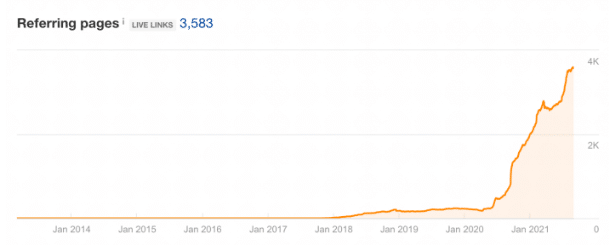
A popular tool to create is a calculator specific to your industry. For example, Growth Connect created a Marketing ROI Calculator to help prospective clients make informed decisions about their marketing strategy.
Depending on your industry, you may be able to find free reusable calculators online to embed on your site. If you own a fitness studio, for instance, you can leverage free BMI calculators to add informational value to your site.

11. Broken link building (Advanced)
Broken links are a fact of life on the internet. They’re as synonymous with the web as cheese is to pizza. But what if you did another website a favor, identified a broken link on their site, and then offered similar content to replace it? Like content from your website, for example.

This technique is slightly advanced because you’ll need an SEO tool, like ahrefs or SEMrush, to find these broken links efficiently. What you do is simply add your competitor’s website into your tool of choice, check their backlinks, and filter them to only show backlinks pointing to 404 pages. If you have similar content, try reaching out to the referring website and mention that they have a broken link on their website and offer your page to link to instead.
Since the page no longer exists, you might have to do a bit of digging to see what the page was about. Try getting an idea from the URL, anchor text, seeing if the page has moved to a new URL, or plugging the URL into the Wayback Machine.
You can also create the content from scratch if you don’t already have it. Just make sure there are a few backlinks pointing to the broken page to make it worthwhile.
12. Skyscraper link building (Advanced)
The skyscraper technique is finding content on a competitor’s website or in your niche that has a bunch of backlinks and outdoing it! Make your version more in-depth, make it longer, make the design better, add clearer insight. Do anything you can do to give it more value!
For this technique, it’s best to use an SEO tool. Just plug in your competitor’s website and navigate to the section that ranks the pages based on the number of backlinks. Go through the pages and find a blog post that has a bunch of backlinks but also one that you know that you could do better.
Once you’ve created the blog, contact the websites that link to it and let them know you’ve created a blog that you think would bring more value to the website’s users because of “A, B, and C.”
✅ Tip: Bringing more value alone might not be a good enough reason for a website to update its page with your link. To make it more appealing, you can offer a link back to their website from a relevant blog on your website.
Common link building mistakes to avoid
Link building can be a powerful way to boost your search rankings and drive more traffic to your site. But if you’re not careful, it’s easy to step on a few landmines that can blow up your SEO efforts.
Here are three common link building mistakes to avoid at all costs:
❌ Engaging in link farms or schemes
Link farms and schemes are exactly what they sound like – shady tactics that try to game the system by artificially inflating your backlink count. This might include buying links, participating in link exchanges, or using automated tools to blast your links all over the web.
Not only are these tactics ineffective, but they can also seriously harm your website’s reputation with search engines. Google and other search engines are getting smarter every day at detecting and penalizing sites that engage in spammy link building practices.
Instead of trying to cheat the system, focus on earning high-quality, natural backlinks through creating great content and building genuine relationships.
❌ Over-optimized anchor text
Anchor text is the visible, clickable text in a hyperlink. And while using relevant, descriptive anchor text can be a good thing, going overboard can raise red flags with search engines.
If all of your backlinks use the exact same keyword-rich anchor text (like “best dentist in Seattle”), it can look spammy and manipulative to search engines. Instead, aim for a diverse, natural mix of anchor text that includes your brand name, plain URL, and variations of your target keywords.
❌ Neglecting relevance and quality of linking sources
When it comes to link building, quality beats quantity every time. A single link from a high-authority, relevant website can be worth more than 100 links from low-quality, spammy sites.
Before reaching out for a backlink or creating content with the goal of attracting links, ask yourself:
- Is this website relevant to my industry or niche?
- Does this website have a good reputation and strong domain authority?
- Would a link from this website actually send valuable traffic to my site?
If the answer to any of these questions is no, it’s probably not worth pursuing that link. Focus your efforts on building relationships with reputable, relevant websites that can send qualified traffic your way.
Measuring the success of your link building efforts
You’ve put in the work to create awesome content and build high-quality backlinks. But how can you tell if those efforts are actually moving the needle for your business?
Key performance indicators to track
Domain authority
Domain authority is a score that predicts how well your website will rank on search engines. It’s calculated based on factors like the quantity and quality of your backlinks, as well as the overall strength of your website.
As you build more high-quality backlinks, you should see your domain authority start to rise over time. This is a good indication that your link building efforts are paying off and that your website is becoming more authoritative in the eyes of search engines.
Keyword rankings
The whole point of link building is to help your website rank higher for your target keywords, right? So, it only makes sense to track your keyword rankings as a measure of success.
Keep an eye on where your website ranks for your most important keywords, and look for any improvements over time. If you start to see your rankings climb (especially for highly competitive keywords), it’s a good sign that your link building is working.
Organic traffic
At the end of the day, the true measure of success for any SEO effort is how much organic traffic it drives to your website. After all, what’s the point of ranking #1 for a keyword if no one is actually clicking through to your site?
Use tools like Google Analytics to track your organic traffic over time. Look for any spikes or upward trends that correlate with your link building efforts. If you see a steady increase in organic traffic, it’s a good indication that your hard work is paying off.
Tools for monitoring backlinks and traffic
Google Analytics is a free tool that allows you to track your website traffic, including how much of it is coming from organic search. You can also set up goals and track conversions to see how your link building is impacting your bottom line.
Here’s a great setup guide! → How to Set Up Google Analytics 4
Referenced a ton throughout this blog, Ahrefs is a powerful SEO tool that allows you to track your backlinks, keyword rankings, and more. You can use it to see which websites are linking to you, analyze the quality and relevance of those links, and even spy on your competitors’ link building strategies.
SEMrush is another popular SEO tool that offers many of the same features as Ahrefs. You can use it to track your keyword rankings, analyze your backlink profile, and even find new link building opportunities.
Conclusion
Congratulations! You now have a solid understanding of what link building is, why it matters for your business, and how to do it effectively.
I know we’ve covered a lot of ground in this guide, from the key factors that determine backlink value to the most common link building mistakes to avoid. But don’t let all this information overwhelm you.
The most important thing is to get started and take action, even if you’re starting small. Remember, every high-quality backlink you earn is another step towards improving your search rankings, driving more organic traffic, and growing your business.
Here’s my advice:
Start with the “easy” link building strategies 🍎
If you’re new to link building, don’t feel like you need to tackle the most advanced tactics right away. Start with some of the easier strategies we covered, like sharing your content on social media, claiming your business listings, and partnering with local organizations.
These strategies may not earn you hundreds of backlinks overnight, but they can help you build momentum and lay the foundation for more advanced tactics down the road.
Be consistent 📅
Link building is not a one-and-done deal. To see real results, you need to make it a consistent part of your marketing strategy.
Set aside some time each week (even if it’s just an hour or two) to focus on creating linkable content, reaching out to other websites, and monitoring your backlink profile. Over time, these small efforts can compound into big results.
Don’t be afraid to ask for help ✋
Link building can be a complex and time-consuming process, especially if you’re trying to juggle it on top of all your other business responsibilities. If you ever feel stuck or overwhelmed, don’t be afraid to reach out for help.
Consider partnering with an SEO agency or consultant who can help you develop a customized link building strategy, identify high-quality link opportunities, and even handle the outreach and content creation for you.
Having an expert in your corner can save you time, reduce your stress, and accelerate your results. (And if you’re looking for a trusted partner, we’d love to chat! Just reach out to our team to learn more.)



